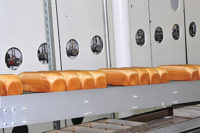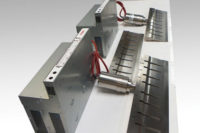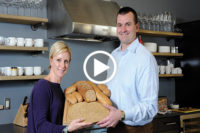However, a glimmer of light came through the tunnel, and it was electric. By 1930, increasing automation for various products gave commercial bakers a chance to improve their product lines with the same efficiencies they achieved in bread baking. Mechanization of baking was starting to take hold. Electric power now dominated the industry, and bakeries were becoming factors in the movement of goods. Commercial baking surpassed home baking as the primary source for the country’s bread.
The industry was experiencing tremendous growth made possible not only by increased demand and technological changes but by the improvements in distribution methods. Transportation and distribution systems were improving to the point where more people were able to conveniently purchase better products at more affordable prices. The days of house-to-house deliveries were fewer and fewer. The rise of multi-plant operations started as a way to expand family-owned businesses. Bakers could start extending their markets more than 150 miles away from their facilities. More than 300 multi-plant owners averaged 29 sales routes in a 1926 survey. All of this was ushering in an entirely new way of doing business.
Also in 1930, Interstate Baking Co. (IBC) was formed in Kansas City, Mo., by baker Ralph Leroy Nafziger. IBC is considered the largest independent baker in the United States, producing breads and cakes in more than 60 bakeries across the country. Multi-unit retailing emerged as stores fought to gain some of the efficiences of large-scale production, and accounted for 6% of total industry sales, notes ASB’s An Historical Tribute to Baking. By this time, more than 50% of all baked foods were distributed through grocery stores. Kroger Grocery and Baking Co., founded by B.H. Kroger, had established 12 bakeries in its retail store operations, and other national and regional chains started to follow his lead.
During the 1930s, Wonder Bread was a top sponsor of the World’s Fairs in both Chicago and New York and gave fairgoers an oven’s eye view of how their loaves were baked. Hostess Twinkies were also introduced by Continental Baking Co. The story goes, manager James A. Dewar, 33, was turning out little sponge cakes in Chicago for shoppers to use as the basis of strawberry shortcakes. When the strawberry season ended, Dewar got the idea to fill the cakes with a sugary cream to keep the line in production. Word has it that a St. Louis advertising sign reading, “Twinkie Toes Shoes,” inspired him to call the cakes Twinkies.
According to whatscookingamerica.net, the first chocolate chip cookie surfaced around 1937, and was invented by Ruth Graves Wakefield of Whitman, Mass. Wakefield ran the Toll House Restaurant, which was once a real toll house built in 1709. Tolls were taken for use of the highway between Boston and New Bedford, Mass.

















